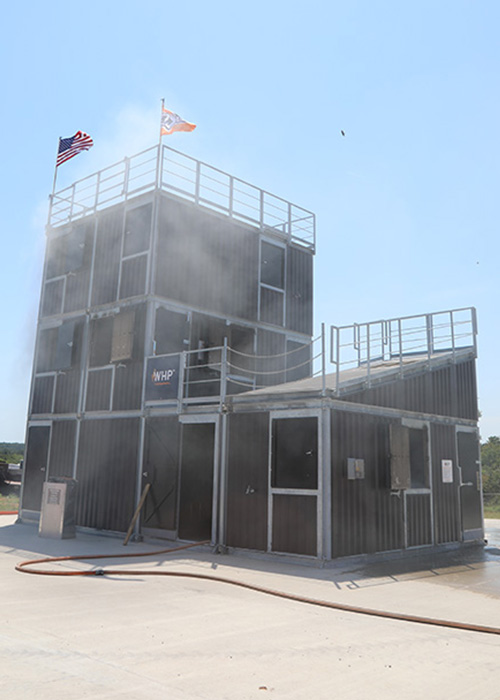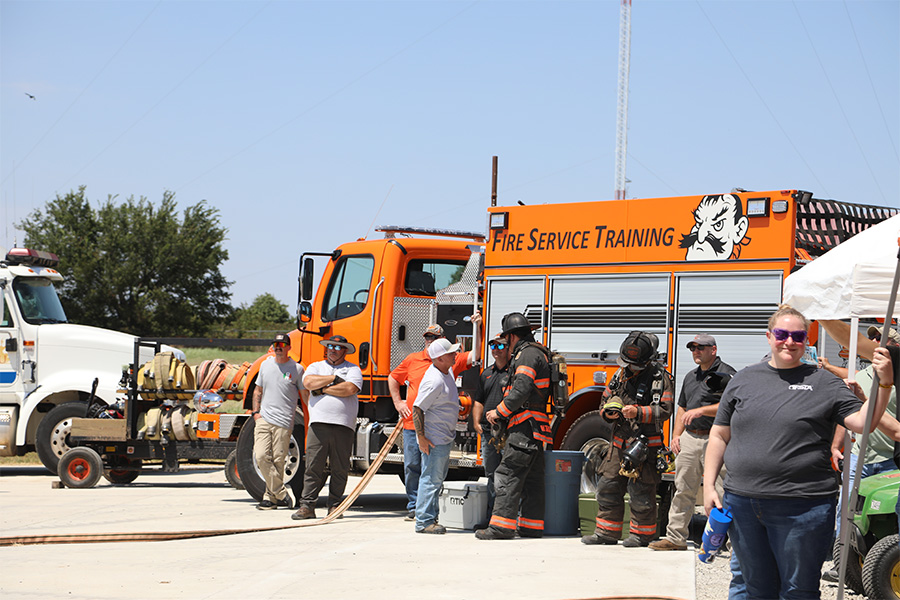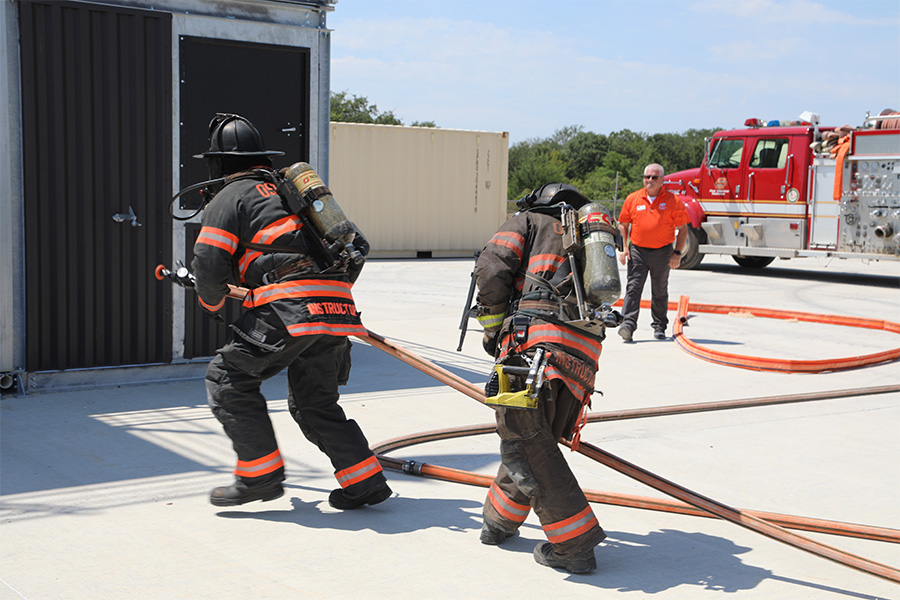
OSU Fire Service Training's new burn building to further modernize, expand program
Monday, August 18, 2025
Media Contact: Tanner Holubar | Communications Specialist | 405-744-2065 | tanner.holubar@okstate.edu
The College of Engineering, Architecture and Technology at Oklahoma State University has a longstanding tradition of equipping firefighters with the skillsets necessary to save lives.
The Fire Service Training program in CEAT has prepared Oklahoma’s firefighters and emergency responders to meet challenges faced in the line of duty since 1931. The program continues to evolve to incorporate new technology and tactics to modernize the training offered.
A new facility was constructed recently that will elevate the program even higher. With the construction of a new burn building — used to simulate search and rescue operations of an active fire — the program will have a building that will better simulate conditions of a real fire, as well as providing more training opportunities with another functional facility.

The three-story building is the result of a collaboration between CEAT, the Federal Emergency Management Association and WHP Training Towers. It is the first new burn building for the program since 1994.
“Any time I think about Fire Service Training on this campus, it warms my heart,” CEAT Dean Hanchen Huang said. “Fire Service Training was established here in 1931 and has tremendous prominence and impact.”
The three-story building will open the possibility for additional training techniques, such as rappel training and Vent-Enter-Search training. It features standpipe connections, where trainees can become well-versed on the types of connections for hoses and their specific uses. In addition, the structure contains two burn rooms on different floors, a larger search area and a room for perfecting the skills needed to ventilate a burning building.
“It’s going to open it up to a lot more types of training and techniques,” said Justin Spence, FST fire programs coordinator. “The top floor has anchors on it, which allow for rappel training. We could do that previously, but it was on a separate building, so this new building has that as an additional feature.
“There’re so many opportunities with the new building. They can climb a ladder to the top of the building, cut a hole in the roof, all while they are searching and using their coordinated fire tactics.”
This allows trainees to hone multiple skills in one location, when previously different training sessions were held in different buildings. It will further modernize the program and the additional training opportunities will lead to an increase in the program’s enrollment.
“This makes our facilities here more like a fireground,” said Paddy Metcalf, FST fire programs manager. “Times have changed from when Justin and I started 25 years ago. We’re trying to train the more aggressive firefighters nowadays, because the fires are more aggressive. This is going to help do that.”
Caroline Reed, FST director, said the building is not just a structure, but a representation of the high importance of training the next generation of firefighters and first responders.
“It’s a long-term investment in firefighter readiness and public safety and will provide realistic, hands-on training to better prepare our firefighters to serve and protect our communities,” Reed said.
CEAT's contributions to the safety and effectiveness of Oklahoma’s firefighters affect all 77 counties in the state as well as nationally. True to the land-grant mission, CEAT is a major player in ensuring the first responders in our country have the knowledge and skills to do what they do best: protect our communities.


